Key takeaways:
- Game world design balances visual beauty and gameplay mechanics, emphasizing environmental storytelling to create emotional connections.
- Utilizing tools like Unity and Blender enhances creativity and project collaboration, significantly impacting game development.
- Programming basics, such as variables and event-driven approaches, are essential for implementing interactive features that enrich player experience.
- Immersive worlds are created through deep backstories, sound design, and fostering player agency, making the game environment feel alive and engaging.
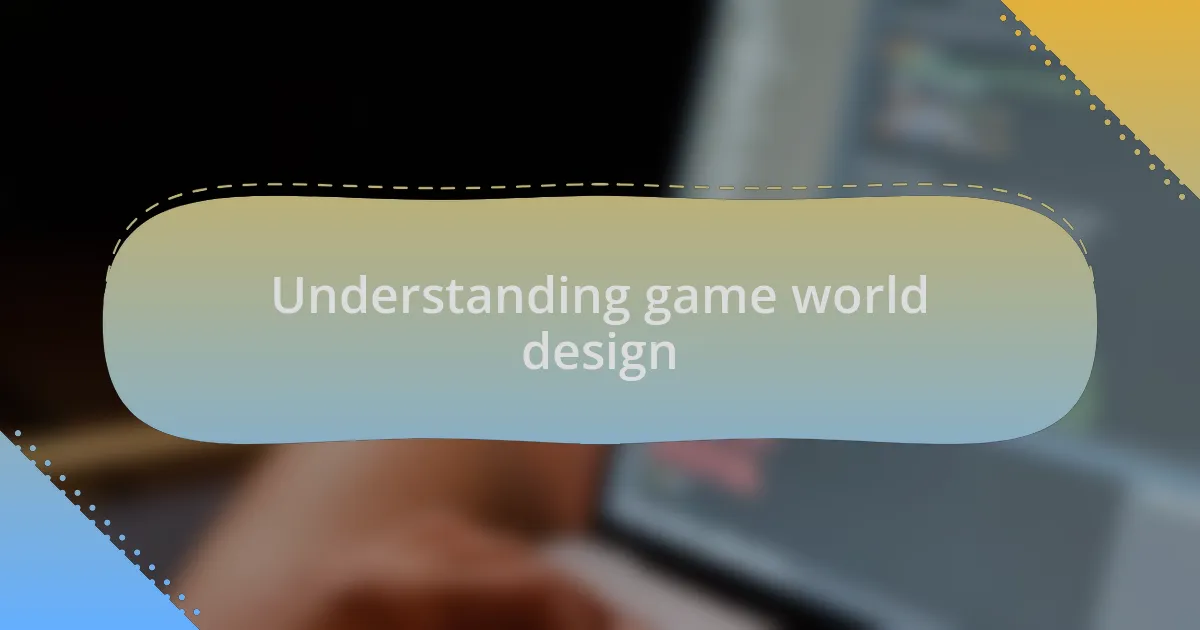
Understanding game world design
Game world design is an intricate blend of creativity and functionality. I remember when I first tried to build a world; I was so focused on making it visually stunning that I overlooked gameplay mechanics. Have you ever wondered how a beautiful landscape can sometimes distract from the core experience? It’s a crucial balance to strike.
As a designer, I often find that the essence of the game world lies in its ability to tell a story without words. For instance, I once created a haunted forest that served as both a level and a narrative device. Each tree and shadow stirred emotion in players, conveying a sense of dread and mystery without any dialogue. Isn’t it fascinating how much atmosphere can be generated just through environmental storytelling?
To truly understand game world design, consider it a living entity, one that evolves alongside player choices. I recall testing a prototype where player actions reshaped the surroundings, altering not just the game itself but also how players connected with it emotionally. Isn’t that the goal? Crafting a memorable experience that resonates long after the game is switched off?
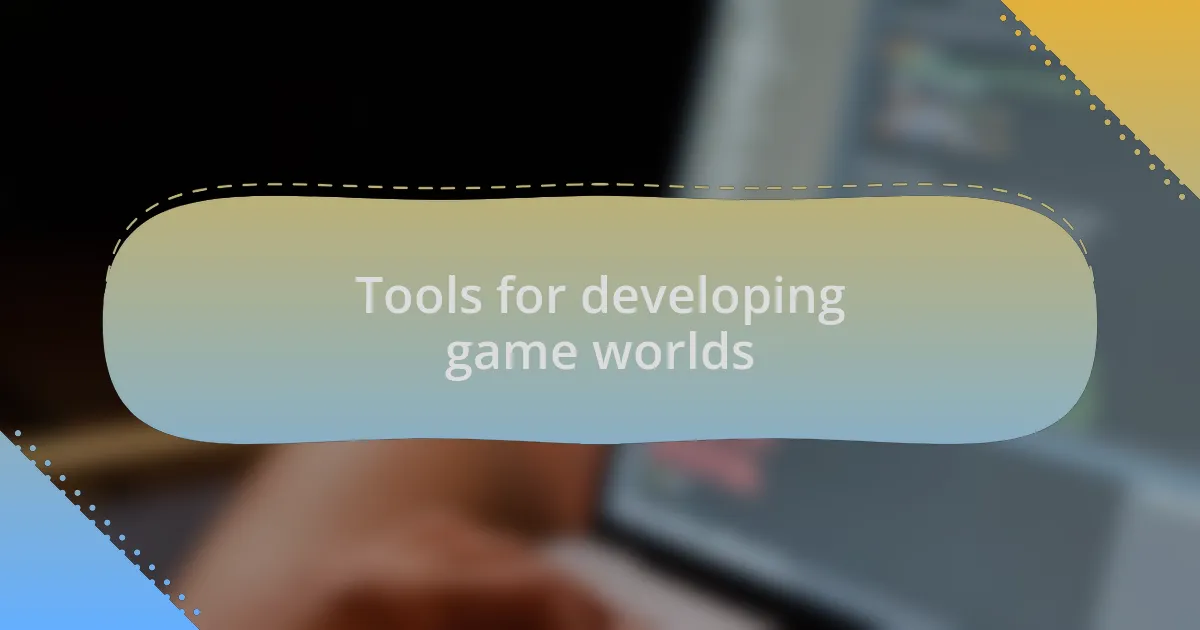
Tools for developing game worlds
When it comes to developing game worlds, the right tools can significantly enhance your creative process. A game engine like Unity or Unreal Engine can be a game-changer. I remember diving into Unity for the first time and discovering how its intuitive interface allowed me to transform my ideas into immersive environments quickly. Have you ever had a moment when a piece of software just clicks with your creative vision? That’s what happened to me.
Additionally, tools such as Blender for 3D modeling and Substance Painter for texturing add depth to your worlds. I once spent hours sculpting a character in Blender, feeling the excitement build as my digital creation took shape. The ability to layer textures and materials in Substance Painter brought that character to life in ways I hadn’t imagined. It’s incredible how these tools can turn a flat idea into a multi-dimensional experience.
Lastly, I can’t stress enough the importance of collaborative tools like Trello or GitHub in managing your project. During my team projects, these platforms became essential for tracking progress and sharing ideas seamlessly. How important is collaboration to you in your creative process? For me, it completely transforms the experience, making it more enriching and often leading to unexpected breakthroughs.
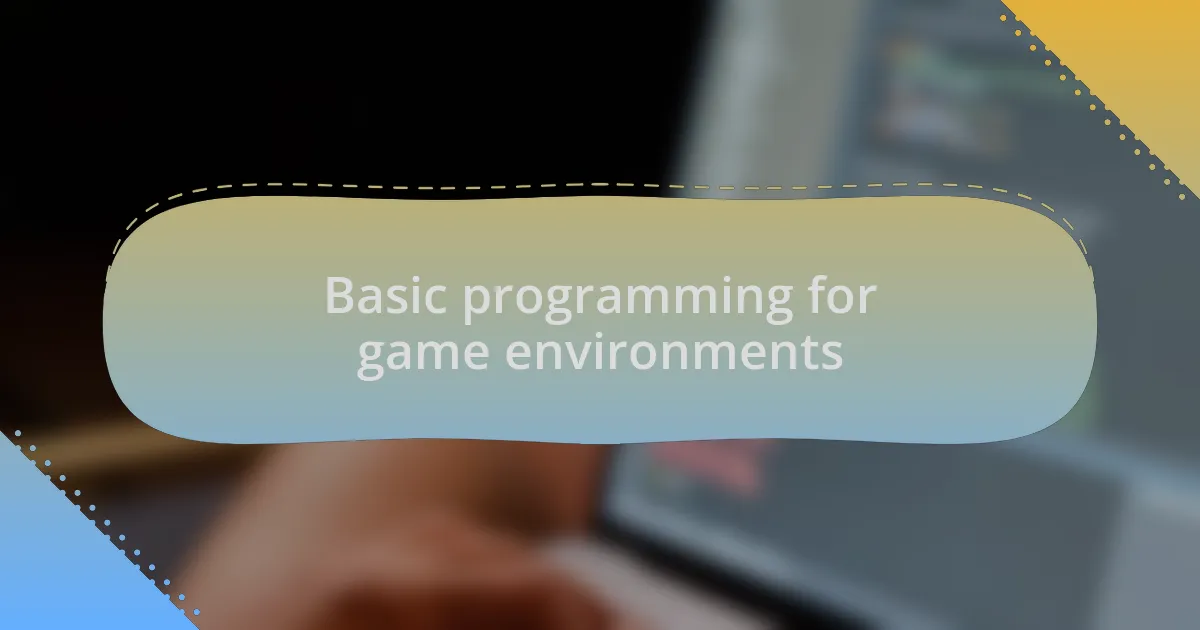
Basic programming for game environments
Creating basic programming for game environments can feel daunting at first, but it’s truly an exciting journey. I remember when I was mastering the fundamentals of scripting in C# for Unity. The thrill of watching my code come to life on screen, as simple commands controlled game objects, was exhilarating. Have you ever experienced that rush of anticipation as you debugged a script, only to see your character jump and interact with the world?
To lay a solid foundation, understanding key programming concepts like variables, functions, and loops is essential. I found it transformative when concepts clicked into place, such as how a loop could dynamically generate multiple enemies. It was like watching a tiny bit of magic unfold in my game! This kind of logic not only fuels creativity but also allows for more complex interactions within your game environment.
Moreover, implementing physics engines is crucial for realism in gaming. I still recall the moment I added gravity to a jump mechanic; seeing characters soar and land accurately added a layer of immersion that made my game feel alive. Isn’t it fascinating how a few lines of code can shift a game from flat to dynamic? That’s the beauty of programming in game development, and it’s just the beginning of your creative potential.
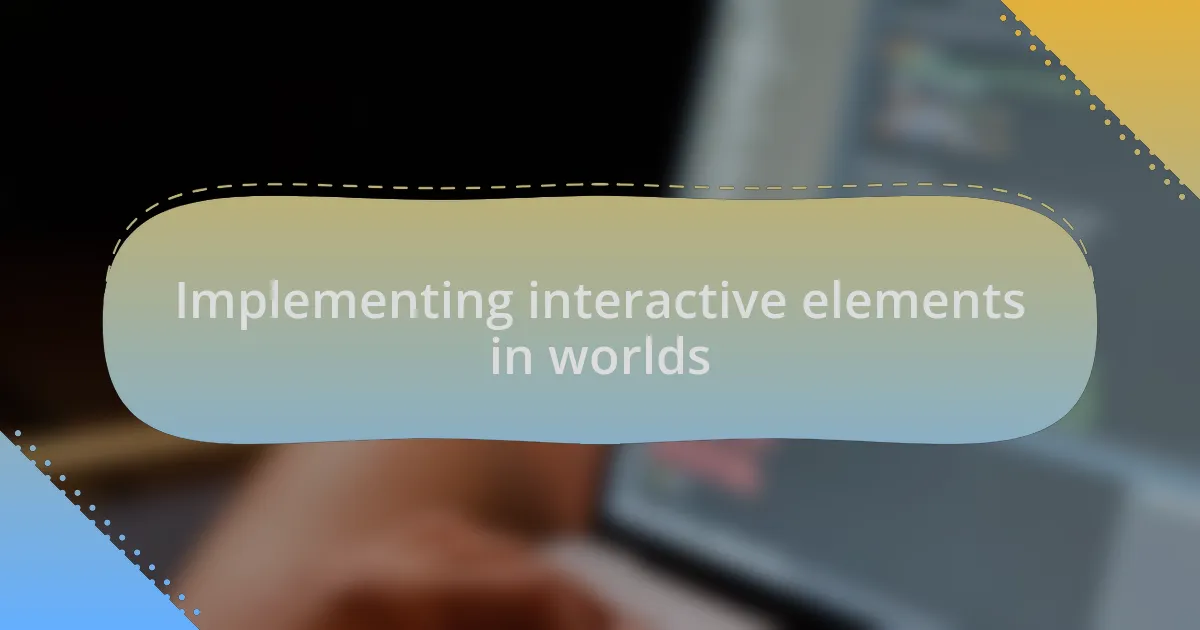
Implementing interactive elements in worlds
When I first started adding interactive elements to my game worlds, I quickly realized how they transformed static environments into living ecosystems. For instance, implementing simple NPC (non-player character) interactions, such as greetings or quests, not only made the world feel more immersive but also created avenues for players to engage meaningfully with the narrative. Have you ever created a character that felt so real you were genuinely excited to interact with them?
When developing interactive features, I found using event-driven programming incredibly helpful. This approach allows objects in the game to respond to player actions, creating a flow of natural consequences that enhance the gaming experience. I remember coding an interactive door that required players to collect a key—watching them search high and low for that elusive item reinforced the storytelling aspect in a delightful way. Isn’t it rewarding when players become truly invested in their quest?
Furthermore, incorporating environmental interactions, like destructible objects or movable platforms, adds layers of strategy and fun. I still smile when I recall how my friends spent hours figuring out how to exploit these mechanics to solve potential puzzles. It’s amazing how much players appreciate when they can manipulate their environment—don’t you think it makes the game feel richer and more rewarding?
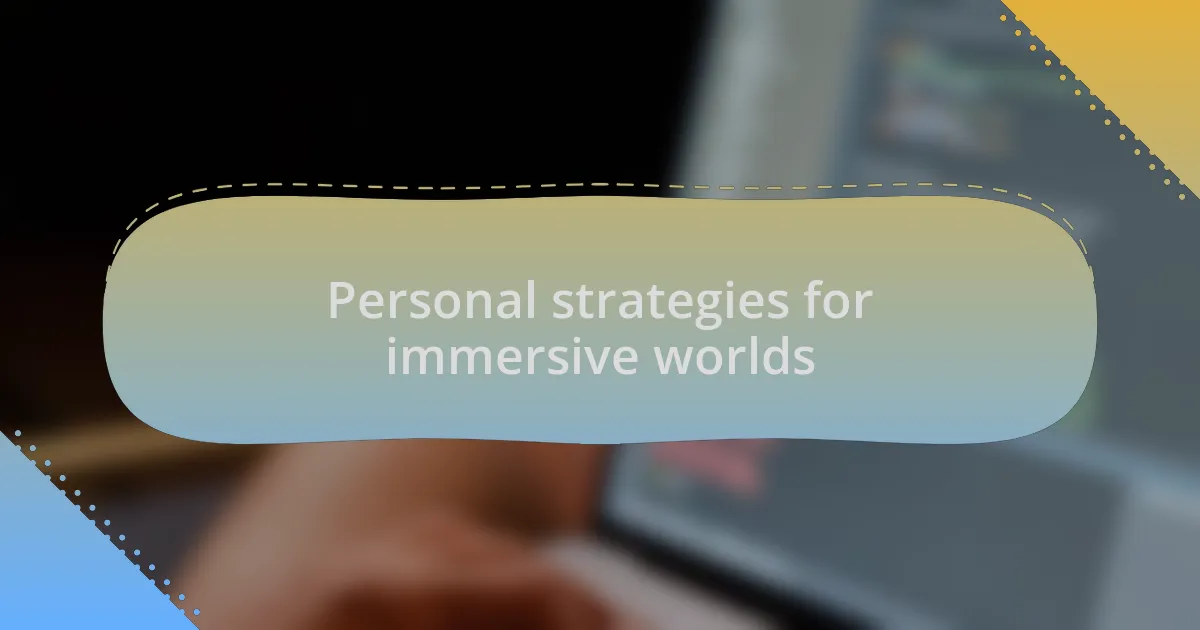
Personal strategies for immersive worlds
Creating immersive worlds has become an art form for me, and one of my personal strategies involves deepening the backstory of my environments. I often ask myself, “What history does this place hold?” For instance, I once designed a small village that had been abandoned after a catastrophic event. I embedded clues throughout the landscape—crumbling buildings, neglected farms, and remnants of personal belongings. Players often express how these details bring the setting to life, making every corner of the world feel significant.
Another technique I rely on is sound design. I believe that auditory elements can change a player’s perception of space in powerful ways. I remember when I added wind sounds that whispered through the trees or distant wolf howls echoing over mountains. The feedback from players was incredible; many mentioned how these subtle sound cues heightened their sense of immersion, making them forget they were even in a game. How does sound impact your experience of a game?
Finally, I prioritize player agency in my worlds. Giving players meaningful choices often leads to unforgettable moments. I once created a decision point where players could choose to side with a character or betray them, drastically altering the narrative path. Watching players grapple with their decisions revealed to me just how engaged they became. Isn’t it fascinating to see how choices can make a virtual world feel so authentically alive?